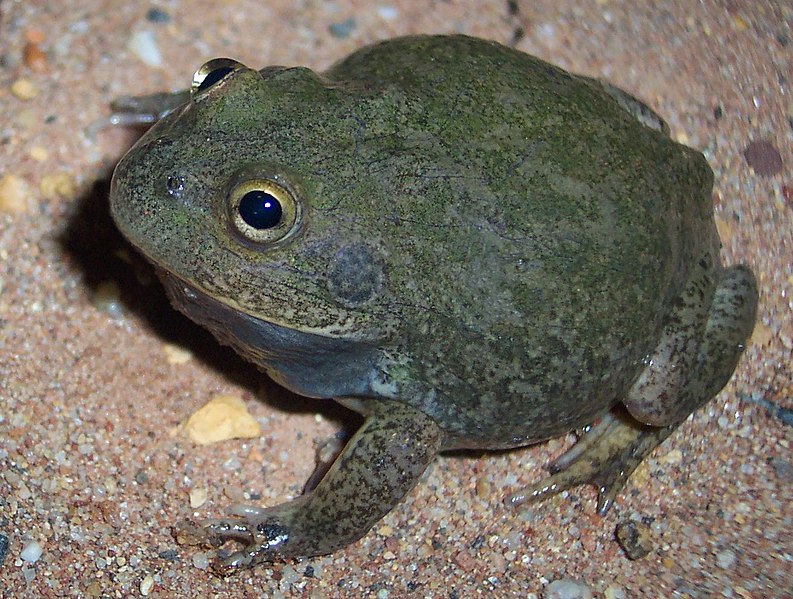I received my first “Uncle Milton’s Ant Farm” at about age 6, and instantly realized that therein lay the keys to a world previously closed to me (incidentally, Uncle Milton’s Ant Farms are still on the market, complete with decorative green plastic farmhouses and a coupon for live ants!). My interest in subterranean creatures soared, and I soon had farms stocked not only ants but also earthworms, beetle grubs and even mole crickets.
From Ants to Gerbils
My introduction to using ant-farm type enclosures for other animals came a few years later. Mongolian gerbils had just entered the US pet trade, and I became fascinated with these social, burrowing rodents.
In preparation for receiving my first pair of gerbils, I read all that I could get my hands on. This amounted to a single care pamphlet – but within its pages I read about a burrow system designed by the author. By inverting one aquarium (bottom side up) inside a larger tank, the author encouraged the rodents to burrow along the front glass. When they emerged, the active little fellows had use of the entire large enclosure, since the bottom of the inverted tank, covered with soil, served as a substrate.
Fossorial Herps and Invertebrates
Starting with my own collection and refining the system while working at the Bronx and Staten Island Zoos, I found the basic premise widely applicable to fossorial (burrowing) creatures of all types. The burrows are essentially sandwiched between 2 panes of glass, allowing for easy viewing through one side.
I especially like this set-up for eastern spadefoot toads, marbled salamanders, Australian water-holding frogs and fossorial tarantulas, scorpions and centipedes. In the terrariums and zoo exhibits typically used for such creatures we are fortunate to get an occasional glimpse of anything approaching natural behavior. However, displayed as described above, they reveal a great deal about their fascinating life histories.
Refinements
 Tarantulas often line terrarium glass with silk, thwarting our efforts to observe them. However, they are less likely to do this if you cover the outside of the glass (that portion that fronts along the burrow) with black paper or cardboard, hinged at the top with tape. If you lift this gently, the spider may remain on view.
Tarantulas often line terrarium glass with silk, thwarting our efforts to observe them. However, they are less likely to do this if you cover the outside of the glass (that portion that fronts along the burrow) with black paper or cardboard, hinged at the top with tape. If you lift this gently, the spider may remain on view.
This technique is also useful for other high-strung creatures. At Tokyo’s Ueno Zoo, I noticed that fossorial voles were very nicely displayed in an ant-farm type enclosure. A hinged wooden door was used in place of the black paper described above, allowing visitors a peek at the rodents going about their business below-ground. I have also successfully used the tank-within-a-tank system in zoo exhibits for dune mole rats and African pygmy mice.
Useful Products
Many burrowing animals are not only shy but nocturnal as well. A night-viewing bulb will help in observing them.
Substrate composition will vary, depending upon the species that you keep. Two very useful products for burrowing animals are R Zilla Coconut Husk and Zoo Med Repti Sand. Experiment with moisture levels until you have a composition that supports permanent burrow systems.
Further Reading
 Some years ago I acquired a group of Australian water-holding frogs (Cyclorana platycephala) and found them to be among the amphibian world’s most accomplished burrowers. To learn more about these amazing creatures, please see http://animals.jrank.org/pages/181/Amero-Australian-Treefrogs-Hylidae-WATER-HOLDING-FROG-Cyclorana-platycephala-SPECIES-ACCOUNTS.html.
Some years ago I acquired a group of Australian water-holding frogs (Cyclorana platycephala) and found them to be among the amphibian world’s most accomplished burrowers. To learn more about these amazing creatures, please see http://animals.jrank.org/pages/181/Amero-Australian-Treefrogs-Hylidae-WATER-HOLDING-FROG-Cyclorana-platycephala-SPECIES-ACCOUNTS.html.
Water holding Frog image referenced from Wikipedia and originally posted by Haplochromis
 That Reptile Blog – Reptile, Amphibian and Exotic Pet Care and Information
That Reptile Blog – Reptile, Amphibian and Exotic Pet Care and Information

 In many regards this is true. Unlike most of its relatives, the little Russian tortoise is quite cold hearty. Its range (three subspecies) extends from the southeastern coast of the Caspian Sea through Kazakhstan to western China and south to Iran, and encompasses some very cold regions. Tortoises living in the north may be active for a mere three months each year.
In many regards this is true. Unlike most of its relatives, the little Russian tortoise is quite cold hearty. Its range (three subspecies) extends from the southeastern coast of the Caspian Sea through Kazakhstan to western China and south to Iran, and encompasses some very cold regions. Tortoises living in the north may be active for a mere three months each year. Although nocturnal, assume that bent-toed geckos require UVB radiation (others in the genus seem prone to metabolic bone disease). As these lizards generally do not bask at very high temperatures, a fluorescent bulb is preferable. Among florescent models, the
Although nocturnal, assume that bent-toed geckos require UVB radiation (others in the genus seem prone to metabolic bone disease). As these lizards generally do not bask at very high temperatures, a fluorescent bulb is preferable. Among florescent models, the  Surinam toads, mata-mata turtles, axolotls, mudpuppies and other wide-mouthed aquatic animals that utilize suction (the flow of water into the gaping mouth) to capture prey quite frequently swallow gravel in the course of feeding.
Surinam toads, mata-mata turtles, axolotls, mudpuppies and other wide-mouthed aquatic animals that utilize suction (the flow of water into the gaping mouth) to capture prey quite frequently swallow gravel in the course of feeding.